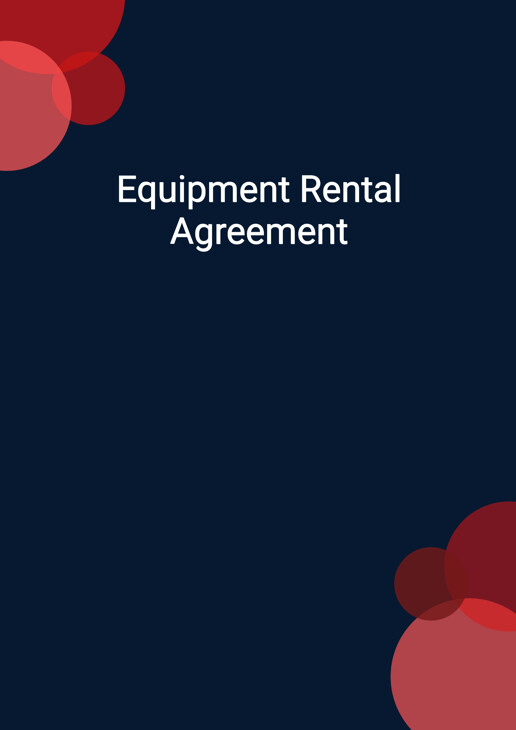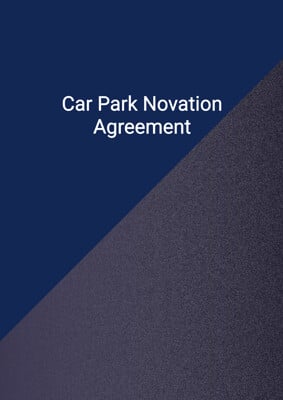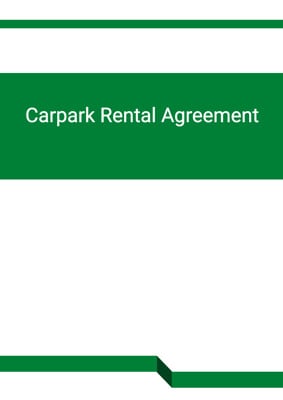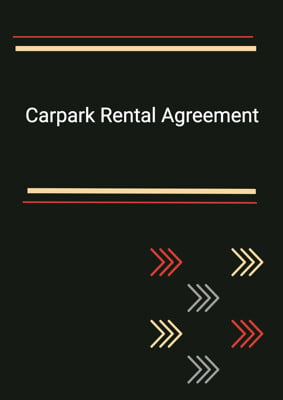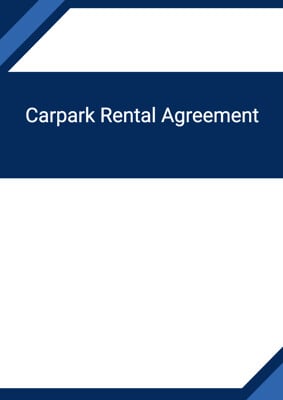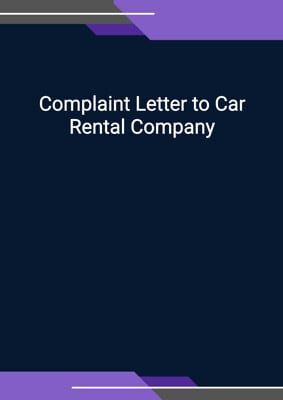How to Tailor the Document for Your Need?
01
Create Document
Fill in the details of the parties. You can click the "Fill with Member’s Information" button to complete it with information saved to your account.
02
Fill Information
Please fill in any additional information by following the step-by-step guide on the left hand side of the preview document and click the "Next" button.
03
Get Document
When you are done, click the "Get Document" button and you can download the document in Word or PDF format.
04
Review Document
Please get all parties to review the document carefully and make any final modifications to ensure that the details are correct before signing the document.
Document Preview
Document Description
The Equipment Rental Agreement is a legal document that outlines the terms and conditions for renting equipment. It is important because it establishes a clear agreement between the lessor (the party renting out the equipment) and the lessee (the party renting the equipment). The document begins with a brief introduction, stating the names and principal places of business of both parties. It then proceeds to define the equipment being rented and the purpose for which it will be used. The agreement specifies that the equipment is the property of the lessor and will remain so throughout the rental period.
The document is divided into several sections, each addressing different aspects of the rental agreement. The first section, 'Equipment,' provides a detailed description of the equipment being rented, including any specific features or specifications. It also states that the lessee agrees to use the equipment solely for the designated purpose.
The next section, 'Duration,' specifies the length of the rental term, including the start and end dates. It also mentions that the lessor will pick up the equipment according to a predetermined schedule.
The 'Rent' section outlines the payment terms for the rental. It states that the rent is payable on a periodic basis and must be paid in full on the first day of each period. It also mentions that the lessee is responsible for any applicable taxes or fees related to the equipment.
The 'Deposit' section explains the requirement for a deposit and the conditions under which it may be retained or refunded. It states that the lessee must pay the deposit within one business day of signing the lease. If the lease is terminated by the lessee without any violations, the lessor is not required to return the deposit. However, if the lessee breaches the contract, the lessor has the right to retain part or all of the deposit as compensation.
The 'Warranties' section provides assurances from the lessor regarding the condition and quality of the equipment. It states that the equipment will be in good working condition at the start of the agreement and that it is fit for the intended purpose. It also confirms that the lessor has the right to lease the equipment.
The 'Lessor's Responsibilities' section outlines the lessor's obligation to keep the equipment in proper repair, provided that any defects are not caused by the lessee's intentional behavior or negligence. It states that the lessor must take reasonable steps to repair any reported issues.
The 'Lessee's Responsibilities' section details the lessee's obligations during the rental period. These include promptly paying the rent and deposit, using the equipment for its designated purpose, keeping it clean and tidy, and using it in a safe and lawful manner. The lessee must also allow the lessor to inspect the equipment and indemnify the lessor against any loss or damage caused by its use.
The 'Termination of the Lease' section explains the circumstances under which the lease may be terminated by the lessor. These include non-payment of rent, bankruptcy or insolvency proceedings against the lessee, breach of any provision of the lease, or mutual agreement between the parties. It states that upon termination, the lessor has the right to deduct any outstanding payments from the deposit and take possession of the equipment.
The 'Notices and Service' section specifies the methods of communication between the parties and the addresses to which notices should be sent. It states that notices delivered by hand, email, or post are considered duly given, with specific timeframes for each method.
The 'Miscellaneous' section includes general provisions, such as the entire agreement clause, severability of provisions, waiver of breach, and the forfeiture of the deposit as liquidated damages. It also clarifies that the lessee assumes all risks associated with the use of the equipment and agrees not to hold the lessor liable for any loss or damage.
The 'No Rights under Contracts for Third Parties' section states that only the parties to the lease have the right to enforce its terms. Finally, the 'Law and Jurisdiction' section specifies the governing law and jurisdiction for any disputes arising from the agreement.
In summary, the Equipment Rental Agreement is a comprehensive document that covers all aspects of renting equipment. It establishes the rights and responsibilities of both parties and ensures a clear understanding of the terms and conditions.
How to use this document?
To use the Equipment Rental Agreement, follow these steps:
1. Provide information: Enter the names and principal places of business of both the lessor and the lessee. This ensures that both parties are clearly identified.
2. Define the equipment: Describe the equipment being rented, including any specific features or specifications. Also, state the purpose for which the equipment will be used. This ensures that both parties are aware of the equipment's characteristics and intended use.
3. Specify the rental duration: Determine the length of the rental term, including the start and end dates. Also, establish a schedule for the lessor to pick up the equipment. This ensures that both parties are aware of the rental period and the logistics of equipment retrieval.
4. Agree on rent payment: Determine the rent amount and the payment frequency (e.g., monthly). Specify the due date for each payment and any penalties for late payment. This ensures that both parties are aware of the financial obligations and consequences.
5. Settle the deposit: Determine the amount of the deposit and the deadline for payment. Establish the conditions under which the deposit may be retained or refunded. This ensures that both parties understand the deposit requirements and its purpose.
6. Address warranties: Provide assurances regarding the condition and quality of the equipment. State that the lessor will ensure the equipment is in good working condition at the start of the agreement. This ensures that both parties have confidence in the equipment's reliability.
7. Outline responsibilities: Clearly define the lessor's and lessee's responsibilities during the rental period. Specify payment obligations, proper use and maintenance of the equipment, and the right to inspect the equipment. This ensures that both parties understand their roles and obligations.
8. Establish termination conditions: Define the circumstances under which the lease may be terminated by either party. Specify the consequences of termination, such as the deduction of outstanding payments from the deposit. This ensures that both parties are aware of the conditions for ending the agreement.
9. Communicate effectively: Provide accurate contact information for both parties and specify the acceptable methods of communication. This ensures that both parties can easily reach each other for any necessary communication.
10. Understand legal implications: Familiarize yourself with the laws and jurisdiction applicable to the agreement. Be aware of the legal rights and remedies available to both parties in case of disputes. This ensures that both parties are aware of their legal rights and obligations.
By following these steps, you can effectively use the Equipment Rental Agreement and ensure a smooth rental process.
Not the right document?
Don’t worry, we have thousands of documents for you to choose from:
